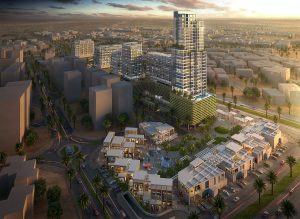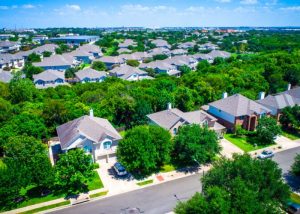
Introduction
Welcome to the world of retail real estate, reimagined! In this article, we will explore innovative investment approaches that are reshaping the potential of retail properties. The retail landscape is evolving, and to succeed, investors need to adapt and embrace creative strategies. We’ll show you how to maximize returns, mitigate risks, and build a thriving retail property portfolio in this new era.
The Changing Face of Retail Real Estate
Before we dive into the innovative investment approaches, let’s take a moment to understand the evolving landscape of retail real estate:
Retail Real Estate: This sector encompasses commercial properties designed for the sale of goods and services to consumers. From traditional shopping centers to experiential stores, retail real estate is a dynamic field with changing opportunities and challenges.
Investing in retail properties continues to offer potential for rental income, capital appreciation, and long-term value. However, success in this field requires a fresh perspective and innovative approaches.
Innovative Investment Approaches
Reimagine Tenant Mix
Traditional retail centers are transforming into dynamic, mixed-use spaces. Consider these approaches:
- Live-Work-Play: Integrate residential spaces into your retail properties to create vibrant communities. Offering a live-work-play environment can attract a diverse range of tenants.
- Experiential Retail: Focus on experiential retail concepts. Bring in tenants that offer unique experiences, from immersive VR stores to cooking workshops and fitness centers.
- Local Artisans and Pop-Ups: Encourage local artisans and pop-up shops to infuse creativity and variety into your property. These ever-changing elements keep customers engaged.
Tech-Driven Leasing
Embrace technology to streamline leasing and create more dynamic tenant relationships:
- Virtual Tours: Offer virtual property tours for prospective tenants. This reduces the need for physical visits, making the leasing process more efficient.
- Data-Driven Leasing: Use data analytics to identify the right tenant mix. Understand customer demographics and preferences to curate the ideal tenant roster.
- Smart Contracts: Implement smart contracts for leasing. These self-executing contracts automate rent collection and adjustments based on performance metrics.
Sustainability Initiatives
Sustainability is a rising trend in retail. Consider these approaches:
- Green Building Design: Invest in green building design and eco-friendly features. Sustainable properties can attract environmentally conscious tenants and customers.
- Solar and Renewable Energy: Incorporate solar panels and renewable energy sources. This can reduce operating costs and provide eco-friendly energy solutions for tenants.
- Waste Reduction: Implement waste reduction and recycling programs. A focus on sustainability can attract tenants who align with these values.
Community Engagement
Engage with the local community to create a strong sense of belonging:
- Community Events: Host community events at your property, from farmers’ markets and art festivals to charity drives. These events attract customers and foster a sense of community.
- Support Local Businesses: Prioritize local businesses as tenants. Supporting local entrepreneurs can build a strong community network.
- Collaborative Spaces: Create collaborative spaces where customers and tenants can interact and co-create. Think co-working areas, art studios, and maker spaces.
Future-Proof Design
Design your retail property with the future in mind:
- Flexible Spaces: Create adaptable spaces that can accommodate different tenant needs. The ability to reconfigure spaces easily ensures your property remains appealing to a wide range of businesses.
- Technology Integration: Infuse technology into your property’s design. Consider IoT devices, contactless payment systems, and interactive displays to enhance the customer experience.
- Health and Safety: Prioritize health and safety in your property’s design. Features like touchless entry systems and enhanced ventilation can attract health-conscious tenants.

Photo by Farhan Al-Gifari: https://www.pexels.com/photo/people-inside-the-supermarket-9657110/
Digital Marketing and Personalization
Harness the power of digital marketing and personalized experiences:
- Social Media Engagement: Develop a strong social media presence for your property. Engage with potential tenants and customers through captivating content and promotions.
- Customer Data Analysis: Use customer data to personalize experiences. Understanding customer preferences can help you tailor your tenant mix and promotions.
- E-commerce Integration: Explore e-commerce integration for your retail property. Offering online shopping options can broaden your customer base.
Conclusion
Retail real estate is undergoing a transformation, and innovative investment approaches are the key to success in this evolving landscape. By reimagining your retail properties through creative tenant mix strategies, tech-driven leasing, sustainability initiatives, community engagement, future-proof design, and personalized marketing, you can unlock the full potential of your retail real estate investments.
Success in the reimagined world of retail real estate depends on your ability to adapt, innovate, and stay ahead of changing consumer preferences and market trends. With these innovative investment approaches, you’ll be well-prepared to thrive in this dynamic sector and build a portfolio that stands the test of time.
















